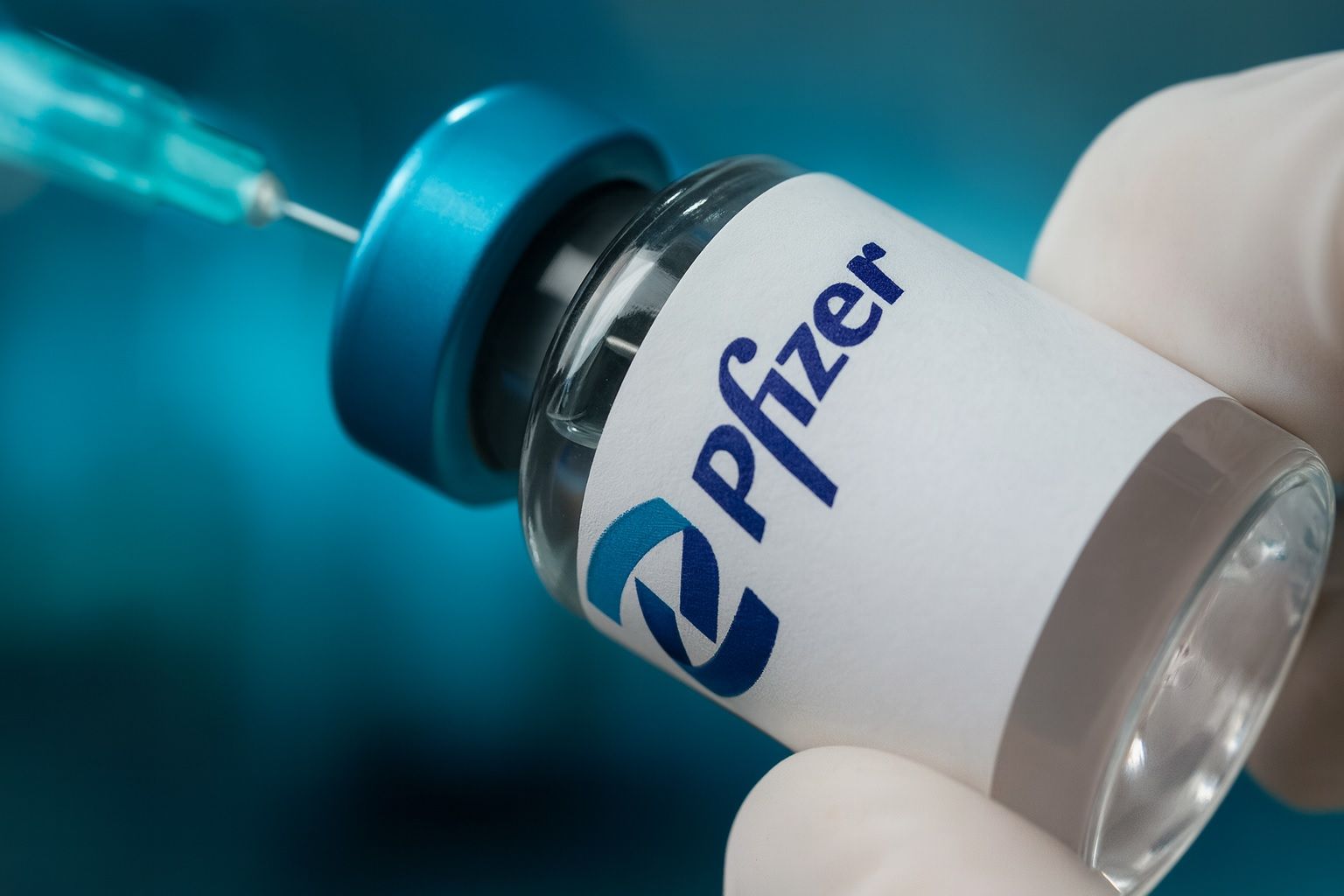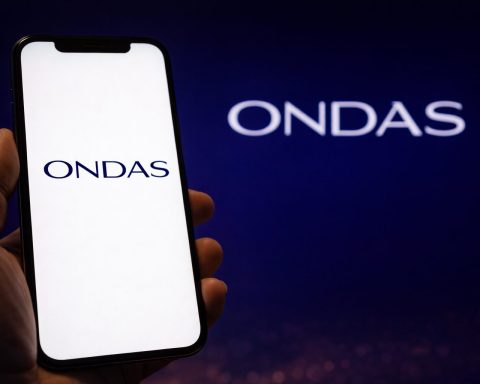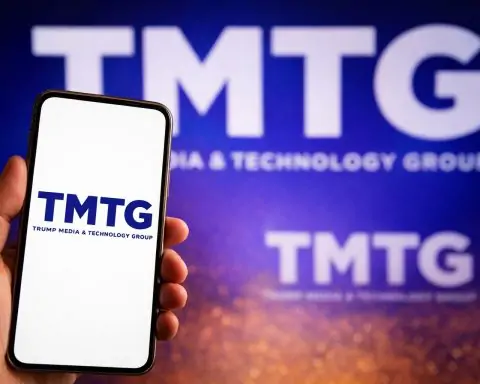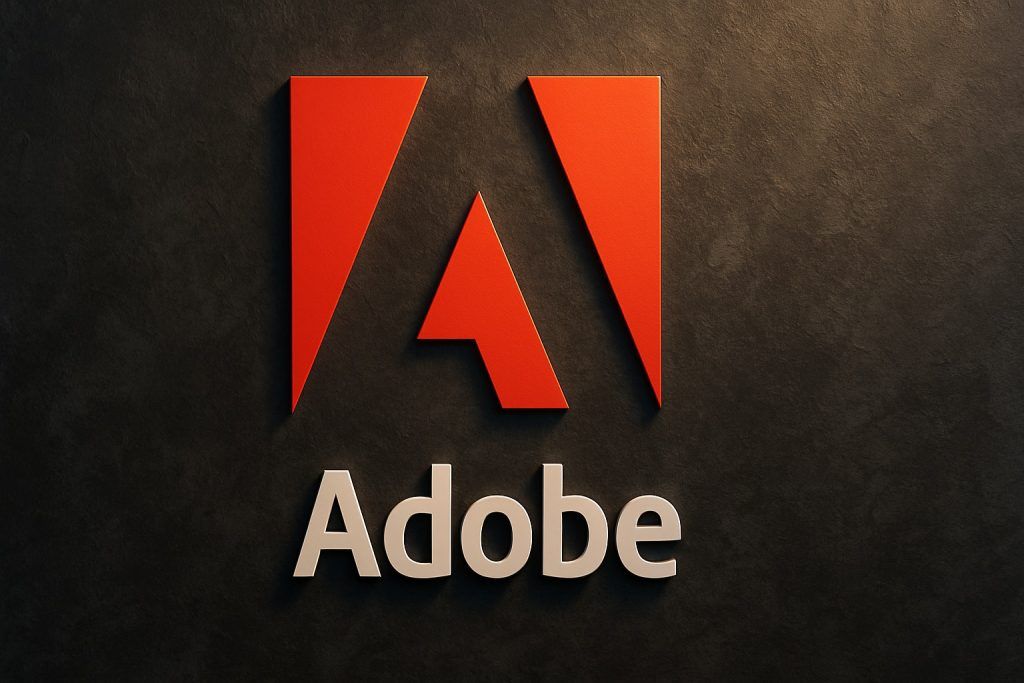- Stock rebound: Pfizer (NYSE: PFE) shares jumped roughly 15% in late Sept/early Oct 2025, climbing from about $23.6 (Sept 26) to $27.2 by Oct 1 [1] [2]. This spike followed a month of flat trading in the low-$24 range, bringing the stock near its 52-week high (~$30.4) [3].
- Trump pricing deal: On Sept. 30, Pfizer struck a landmark agreement with the Trump Administration to cut Medicaid drug prices to the levels paid abroad – the first such deal announced by a major pharma [4] [5]. In return, Pfizer won a three-year waiver of the planned 100% tariffs on its imports (by pledging to onshore production) [6] [7]. This pact “was hailed as a breakthrough” by analysts, signaling that broad price-cut mandates might be less painful than feared [8].
- Obesity drug acquisition: In late September Pfizer agreed to buy Metsera Inc. (NASDAQ: MTSR), a biotech developing weight-loss drugs, for $4.9 billion up front (up to $7.3 billion including milestones) [9] [10]. Metsera brings an experimental portfolio (injectable GLP-1 and amylin analogs) targeting obesity – a booming market expected to exceed $150 billion in the 2030s [11] [12]. Analysts at Leerink forecast Metsera’s drugs could generate ~$5 billion in annual sales if successful [13] [14]. Pfizer CEO Albert Bourla said the deal “propels Pfizer into this key therapeutic area” [15].
- Strong earnings & guidance: Pfizer reported strong Q2 2025 results – revenue $14.7 billion (+10% year-over-year) – and raised its full-year profit forecast [16] [17]. Full-year sales guidance remains at $61–64 billion (roughly flat with 2024), as new drug launches and vaccines offset the drop in COVID-related sales [18]. Management also reiterated its cost-cutting plans (targeting $4 billion in annual savings by 2025) [19] [20]. Quarterly results exceeded analysts’ estimates, driving Pfizer’s mid-August stock rise [21] [22].
- High dividend yield: Pfizer trimmed its dividend in 2025 (now $1.29 annualized), but on depressed stock prices the yield is still ~6–7%, among the highest in large-cap pharma [23] [24]. At $0.43 per share quarterly, Pfizer’s payout (348th consecutive quarter) provides a robust income stream [25] [26]. Despite the cut, many investors see the yield as a sign of confidence in Pfizer’s cash flow.
- Analyst outlook: Wall Street’s consensus is cautiously optimistic. The average 12-month price target is around $29–30 – implying roughly 10–25% upside from current levels [27] [28]. Some analysts have already upgraded their forecasts: BMO Capital’s Evan Seigerman reiterated a Buy rating (target $30) calling the pricing deal a “meaningful win” for Pfizer [29], and Jefferies and BofA similarly reaffirmed bullish views. At a ~7–8× forward P/E (well below the 14× sector average) [30], Pfizer is seen as undervalued relative to its pipeline. Indeed, commentators note Pfizer is something of a “hated” stock at a cycle low – which now “looks like an obesity bargain” given its entry into the weight-loss market [31].
Stock Price & Recent Performance
Before the late-September rally, Pfizer’s stock had been trading lethargically. As one analysis notes, PFE closed around $23.60 on Sept. 26, roughly flat for the year and down ~9% since January [32]. Over the prior 12 months it had fallen about 18%, weighed down by fading COVID sales and patent losses [33]. Its 52-week range was about $20.9–$30.4 [34], so the recent surge took it to the upper end of that range.
The catalyst was clear: on Sept. 30 Trump’s administration announced the Pfizer pricing deal, and PFE instantly rallied. Shares jumped about 6–7% on that day and again on Oct. 1 [35] [36]. By Oct. 1 PFE closed around $27.21 – a one-week gain of ~15% [37] [38]. Trading volumes spiked to nearly 165 million shares on Sept. 30 (vs ~60–70 million typical), underscoring heavy investor interest [39]. In early October the stock has since retraced slightly, trading in the mid-$20s (around $24–26) as of Oct. 17. (For example, one report shows PFE at $24.51 on Oct. 17 [40].)
By market cap (~$150–155 billion), Pfizer remains a pharma heavyweight [41] [42]. Its valuation is depressed: trailing P/E is only ~13–14× (versus ~24× for healthcare stocks) [43]. This reflects the “COVID cliff” that pulled down 2023 earnings and ongoing generic risks. However, that low P/E and generous dividend (~6–7% yield [44]) lead many analysts to call it cheap.
Recent News & Catalyst Highlights
Trump Drug-Price Deal Spurs Rally
The big headline was the White House event on Sept. 30. President Trump announced that Pfizer would voluntarily slash Medicaid drug prices to match those in other rich countries, and commit to “most-favored-nation” pricing on new drugs [45]. In exchange, Pfizer avoids the looming 100% tariff on drug imports (if Pfizer shifts production to the U.S.) – plus it will be listed on Trump’s upcoming “TrumpRx” consumer drug website. According to Reuters, “Pfizer became the first big pharma to cut such a deal,” a move investors hailed as a “breakthrough” reducing price-cut overhang [46].
The market loved it. On Sept. 30 and Oct. 1, not only did Pfizer pop ~6–7% each day [47], but the whole pharma sector rallied. U.S. drugmakers like Eli Lilly, Merck, AbbVie and BMS climbed 5–8% on Oct. 1 [48] [49]. (A Reuters analysis noted Lilly was the biggest gainer after the news, while Pfizer, Novo Nordisk and Novartis lagged slightly [50] [51].) Analysts say the deal clears away the worst-case pricing fears. BMO’s Evan Seigerman said Pfizer’s deal is a “meaningful win” and Gabelli’s Daniel Barasa called it a “clearing event” for the sector [52] [53]. Effectively, Trump signaled that drugmakers who cooperate on prices will get tariff relief and public credit, so much of the regulatory uncertainty has lifted.
Obesity Pipeline: Metsera Acquisition
That same week (Sept. 22), Pfizer unveiled the Metsera deal – a bold move into obesity drugs [54] [55]. Metsera is a small biotech developing four weight-loss treatments (injectable GLP-1 and oral amylin analogs). Pfizer is paying $47.50/share in cash, totaling $4.9 billion up front, plus up to $22.50/share on milestones (about $7.3 billion total) [56] [57]. The acquisition closes Pfizer’s gap behind obesity leaders Novo Nordisk (Ozempic/Wegovy) and Eli Lilly (Mounjaro). Early Metsera data are promising: Pfizer noted the lead oral candidate has a “potential best-in-class profile,” and Leerink analysts forecast >$5 billion peak sales if the programs succeed [58]. However, these drugs are mostly mid-stage trials – Pfizer’s own oral GLP-1 program was halted last year over safety issues – so success is not assured.
Investors have mixed views. Some caution that Pfizer is late to a crowded field, but others call it a cheap way to play the weight-loss boom. The Wall Street Journal observed this deal “could make [Pfizer] the budget entry-point to the weight-loss bonanza” [59], since PFE stock hasn’t yet priced in any obesity windfall. In short, Pfizer just bought a multi-billion-dollar opportunity; analysts will be watching next year’s clinical updates closely. Bourla called the move a way for Pfizer to “re-enter a mega-market” it nearly abandoned [60].
Pipeline and FDA Updates
Beyond obesity, Pfizer’s pipeline is churning with developments. At the ESMO cancer conference (Oct. 2025), Pfizer plans to present data from 45+ oncology studies [61]. This will showcase new cancer treatments inherited from its $43 billion Seagen acquisition (closed late 2023), including antibody–drug conjugates like PADCEV and TUKYSA. In fact, mid-October press releases announced positive trial results for various combinations (lung, breast, bladder cancers) [62], underscoring the company’s oncology momentum.
On the vaccine front, Pfizer/BioNTech received FDA approval in August for an updated COVID-19 booster (targeting at-risk groups) and in early Sept. announced robust Phase 3 data on its next annual formulation (LP.8.1) [63] [64]. These moves keep Pfizer’s vaccine business competitive, though COVID vaccines now contribute a much smaller slice of revenue than in 2021. Pfizer’s own press noted the LP.8.1 booster yields strong antibody responses, reinforcing its recent FDA approval [65].
Legal & Regulatory Issues
A few challenges remain. Notably, Pfizer is defending dozens of lawsuits over its Depo-Provera contraceptive shot, which plaintiffs claim caused rare brain tumors. In late September a federal court heard arguments on whether these lawsuits are barred by existing federal law [66]. Pfizer urged the judge to dismiss the suits on preemption grounds. The outcome of those hearings (expected later in 2025) could set a precedent for drug company liability. Separately, Pfizer partner Arvinas said it will seek a new partner to commercialize a jointly-developed breast cancer drug under FDA review (vepdegestrant) [67], suggesting Pfizer may be reallocating resources away from that program.
On the policy side, Trump has indicated other drugmakers will be next to cut deals. Analysts are eyeing Lilly and AstraZeneca as likely candidates [68]. In fact, AstraZeneca just announced a $4.5 billion U.S. factory and a U.S. listing, and Lilly has pledged $5 billion for U.S. expansion – positioning both favorably for a pricing pact [69]. Such moves have kept pharma on edge: some investors report being contacted daily by government officials about pricing commitments (as the Reuters story noted) [70]. Thus Pfizer’s early-mover advantage may soon face company.
Analyst Forecast & Commentary
Despite recent gains, analysts caution that Pfizer’s outlook hinges on execution. The consensus “Hold” rating and $29–30 price target [71] [72] assume steady performance and eventual payoff from obesity/cancer R&D. Key upside drivers cited include the hefty dividend (now ~7%) and low valuation, which make Pfizer attractive if pipeline successes materialize [73] [74]. A Street average target of $29.45 (TipRanks) implies ~20% upside from today’s levels [75].
Notably, many analysts emphasize that Pfizer’s deal with the U.S. clears policy clouds. BMO Capital’s Seigerman sees the pricing pact as a “meaningful win” that removes worst-case scenarios [76]. Barclay’s, Jefferies and others have reiterated Buy/Outperform calls after the agreement. RBC, Cantor, and TD Cowen have likewise stressed that the stock’s cheap multiple does not yet reflect potential new revenue (from weight-loss drugs or expanded manufacturing) [77] [78].
More cautious voices point to risks: patents (e.g. on blockbuster Paxlovid, Eliquis) still loom, and drug-pricing reforms (besides Trump’s deal) could emerge under future administrations. Piper Sandler and Bernstein have noted that Medicaid discounts affect only a few percent of big pharma revenue, so the impact on profits is modest – Berenberg estimates at Pfizer only ~1% EPS hit [79]. Meanwhile, inflation and emerging market pressures (e.g. China trade tensions) also factor into forecasts.
Overall, financial commentators describe Pfizer as a “deep-value” stock. In mid-October, Barron’s observed that investors questioning Pfizer’s future must balance the “COVID hangover” against a healthy pipeline and strong cash flow. As TechStock² analysts put it: Pfizer now “behaves like a distressed value play (low P/E, high yield)” [80], raising the debate whether it’s a value trap or an undervalued turnaround. Many lean toward the latter: given the recent rally, “analysts highlight Pfizer’s unusually low valuation and high yield as a potential opportunity” [81].
Broader Pharma Sector Trends
Pfizer’s story is intertwined with the wider pharmaceutical industry. The Trump administration’s aggressive approach to drug pricing has pressured all big drugmakers this year, but Pfizer’s deal suggests a path to compromise. Reuters noted the entire sector’s healthcare indices hit multi-year highs on Oct. 1 after Pfizer’s news [82] [83]. Competitors are reallocating too: Johnson & Johnson has spun off its consumer arm and is benefiting from stability (stock +20% YTD) [84], while Merck’s shares (down ~20%) sag on Keytruda patent worries. Meanwhile, obesity/OEM collaborations have reshaped portfolios – Novo and Lilly dominate the weight-loss drug boom, prompting others (Pfizer, Roche, Amgen) to chase similar therapies.
Regulatory shifts are also key. Congress and agencies are debating insulin price caps and expanding patent-exempt “biosimilar” pathways, which could cut into profit margins. However, Pfizer’s manufacturing footprint and focus on complex biologics (vaccines, oncology) give it some hedge. The company has emphasized $70 billion in planned U.S. R&D/manufacturing investments over the next decade, part of its tariff deal [85], which may curry favor with policymakers.
The Bottom Line: Pfizer’s stock is riding a wave of policy news and strategic bets. The Trump pricing accord has removed a key overhang, and the Metsera acquisition positions it in a white-hot market. If Pfizer can translate these developments into sustained growth – on top of cutting costs and delivering on its pipeline – analysts think the stock could move toward the $30 area or beyond [86] [87]. For now, many see Pfizer as a deep-value play in pharma: a high-yield, low-valuation giant that may finally get another chance to regain favor.
Sources: Recent TS2.tech analysis of Pfizer stock [88] [89]; Reuters news on Pfizer’s Medicaid pricing pact, Metsera acquisition, and earnings [90] [91] [92]; Pfizer corporate releases; expert quotes from BMO, Gabelli, etc.
References
1. ts2.tech, 2. ts2.tech, 3. ts2.tech, 4. www.reuters.com, 5. ts2.tech, 6. www.reuters.com, 7. ts2.tech, 8. ts2.tech, 9. www.reuters.com, 10. ts2.tech, 11. www.reuters.com, 12. ts2.tech, 13. www.reuters.com, 14. ts2.tech, 15. ts2.tech, 16. ts2.tech, 17. www.reuters.com, 18. ts2.tech, 19. ts2.tech, 20. www.reuters.com, 21. www.reuters.com, 22. ts2.tech, 23. ts2.tech, 24. ts2.tech, 25. ts2.tech, 26. www.pfizer.com, 27. ts2.tech, 28. ts2.tech, 29. ts2.tech, 30. ts2.tech, 31. ts2.tech, 32. ts2.tech, 33. ts2.tech, 34. ts2.tech, 35. ts2.tech, 36. ts2.tech, 37. ts2.tech, 38. ts2.tech, 39. ts2.tech, 40. stockinvest.us, 41. ts2.tech, 42. ts2.tech, 43. ts2.tech, 44. ts2.tech, 45. www.reuters.com, 46. ts2.tech, 47. ts2.tech, 48. ts2.tech, 49. www.reuters.com, 50. www.reuters.com, 51. www.reuters.com, 52. www.reuters.com, 53. ts2.tech, 54. ts2.tech, 55. www.reuters.com, 56. www.reuters.com, 57. ts2.tech, 58. www.reuters.com, 59. ts2.tech, 60. ts2.tech, 61. ts2.tech, 62. www.pfizer.com, 63. ts2.tech, 64. www.pfizer.com, 65. ts2.tech, 66. ts2.tech, 67. ts2.tech, 68. www.reuters.com, 69. www.reuters.com, 70. www.reuters.com, 71. ts2.tech, 72. ts2.tech, 73. ts2.tech, 74. ts2.tech, 75. ts2.tech, 76. ts2.tech, 77. ts2.tech, 78. ts2.tech, 79. www.reuters.com, 80. ts2.tech, 81. ts2.tech, 82. www.reuters.com, 83. www.reuters.com, 84. ts2.tech, 85. ts2.tech, 86. ts2.tech, 87. ts2.tech, 88. ts2.tech, 89. ts2.tech, 90. www.reuters.com, 91. www.reuters.com, 92. www.reuters.com







